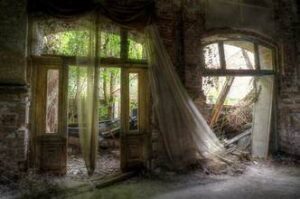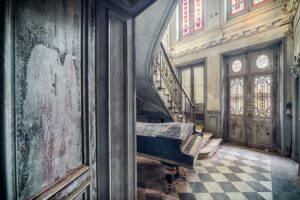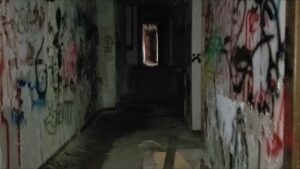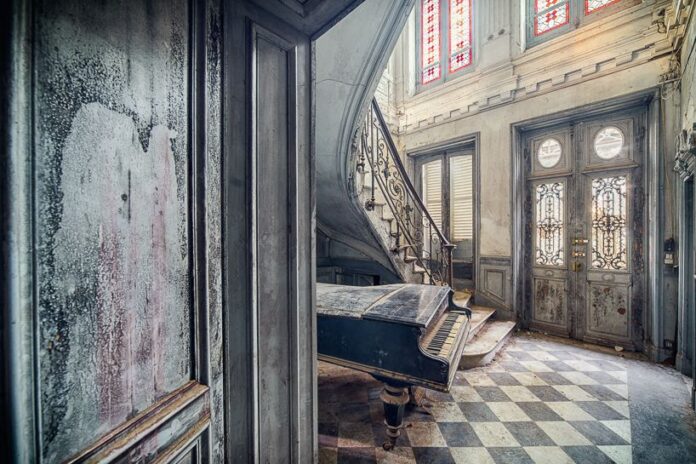
Introduction
Photography in abandoned places, often termed as urban exploration or urbex photography, has become increasingly popular. This niche captures the beauty of decay, presenting hauntingly beautiful images that tell stories of the past. If you’re fascinated by the allure of forgotten spaces and want to start capturing their unique charm, this guide will help you navigate the essential aspects of photographing abandoned places.
Why Photograph Abandoned Places?
Abandoned places hold a certain allure due to their decay and neglect, juxtaposed against the artistry and beauty of their once vibrant existence. These locations often have rich histories and evoke a sense of nostalgia. For photographers, they offer a unique aesthetic characterized by textures, shadows, and colors that are hard to replicate in other settings.
Planning Your Shoot
- Research and Permissions
Before heading out, research the location thoroughly. Understand the history and current condition of the place. Some locations may be private property or unsafe to enter. Always seek permission if required and respect the property.
- Safety First
Safety is paramount in abandoned places. Wear sturdy shoes, bring a flashlight, and be cautious of structural hazards. Check for potential dangers such as broken glass, unstable floors, or hazardous materials.
- Timing and Lighting
Natural light plays a crucial role in urban exploration photography. Early morning or late afternoon light provides soft, diffused illumination that enhances textures and colors. Alternatively, exploring these places during overcast days can also yield dramatic results.
Essential Gear for Urban Exploration Photography
- Camera
A DSLR or mirrorless camera with manual settings is ideal. It allows you to control exposure, focus, and other settings to capture the nuances of decaying environments.
- Lenses
A wide-angle lens is essential for capturing expansive spaces and intricate details. A macro lens can also be useful for close-up shots of textures and decay.
- Tripod
A tripod is invaluable for low-light conditions and long exposure shots. It stabilizes your camera, allowing for sharper images in dim environments.
- Additional Equipment
Consider bringing a flashlight or headlamp for exploring darker areas and a portable battery pack to ensure your gear remains powered throughout your shoot.
Techniques for Capturing Decay
- Focus on Textures
The texture of peeling paint, rusted metal, and crumbling walls can add a dramatic effect to your photos. Use your camera’s macro settings to capture the fine details.
- Play with Composition
Leading lines, framing, and the rule of thirds can help in creating dynamic compositions. Look for elements like broken windows, doorways, and staircases to frame your shots creatively.
- Experiment with Angles
Don’t be afraid to experiment with different angles. Shooting from low or high perspectives can provide unique views of the space and emphasize the grandeur of the decay.
- Capture the Atmosphere
Try to convey the mood of the location through your photos. Whether it’s eerie, nostalgic, or serene, your images should evoke the atmosphere of the abandoned place.
- Emphasize Contrast

The contrast between light and shadow is a key element in photographing decay. Use the available light to highlight textures and create dramatic contrasts in your images.
Post-Processing Tips
- Enhance Textures
During post-processing, enhance the textures captured in your photos. Adjusting contrast and clarity can bring out the details of decay more vividly.
- Color Adjustments
Abandoned places often have muted colors, which can be accentuated or adjusted based on your vision. Experiment with saturation and color grading to achieve the desired mood.
- Cropping and Straightening
Crop your images to improve composition and remove distractions. Straightening any tilted lines can also enhance the visual appeal of your photos.
Legal and Ethical Considerations
- Respect Property
Always respect the property you are photographing. Avoid vandalism or removing items from the site. Your actions should leave no trace of your visit.
- Share Responsibly
When sharing your images, respect the privacy and legal rights associated with the location. Avoid disclosing specific locations that could lead to trespassing or damage.
Conclusion
Photographing abandoned places offers a unique opportunity to explore and capture the haunting beauty of decay. With proper planning, safety measures, and a creative approach, you can create stunning images that tell compelling stories of forgotten spaces. Remember to approach each shoot with respect and care, ensuring that your work not only reflects the beauty of decay but also upholds ethical standards in urban exploration photography.




